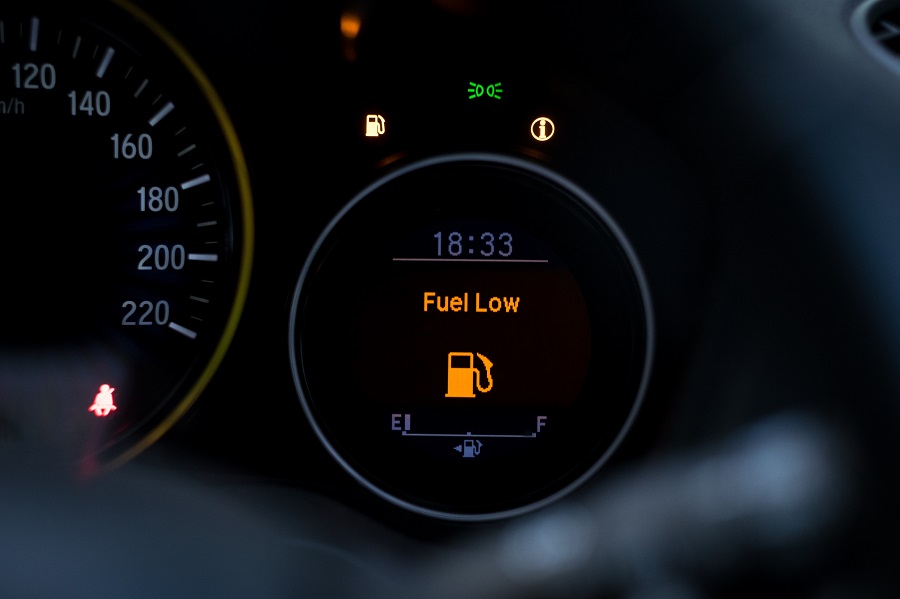Is your dash lit up like a Christmas tree? Well, here’s what all those pretty little colors mean as our car warning lights guide explains all.
Car warning lights are pretty daunting things to suddenly appear on your dashboard, but not all of them are as scary as they may first seem. As part of your car maintenance, it’s a good idea to get familiar with what your car is trying to tell you.
So, to shed some light on what those little symbols mean, we’ve decided to compile the most common ones all here in one place. Let’s get into it – here’s your ultimate guide to car warning lights:
Car Warning Lights Explained
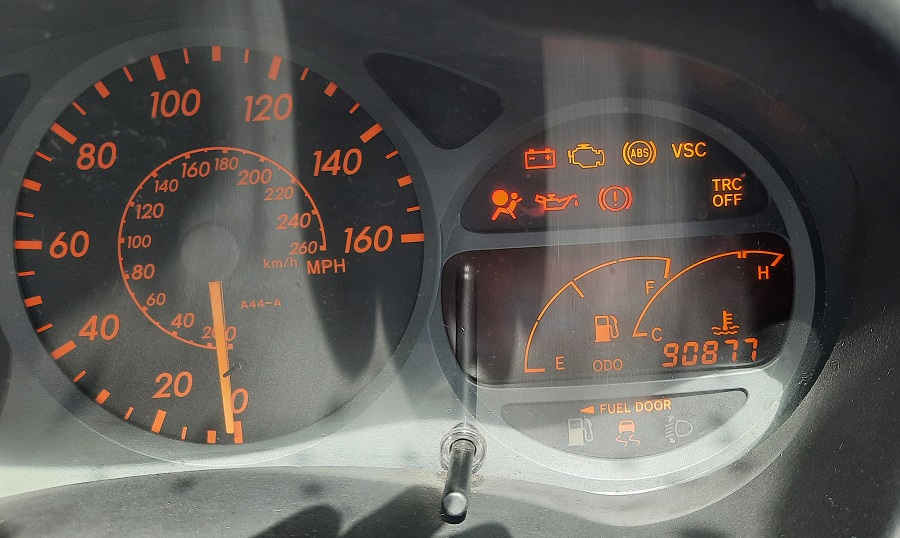
What do the colors mean?
You might not have considered it before, but the color of a car warning light does actually hold some weight. Red lights flag up the most severe issues, usually things which could have a serious impact on safety or the health of your car. Issues from the next tier down are categorized by an orange hue, and while they may not put the occupants at immediate risk, these warning lights still often relate to something that needs prompt attention.
Finally, the third set of warning lights are ones that you shouldn’t be too concerned about. These are either green, blue, or white. Marques often use different colors and designs as these simply convey information rather than actual warnings about faults, so we’ll skip over those lights for now. The red and orange lights, meanwhile, are standardized between marques. That said, if you spot a warning light which doesn’t look familiar to what you see here, always consult your car’s manual to be sure.
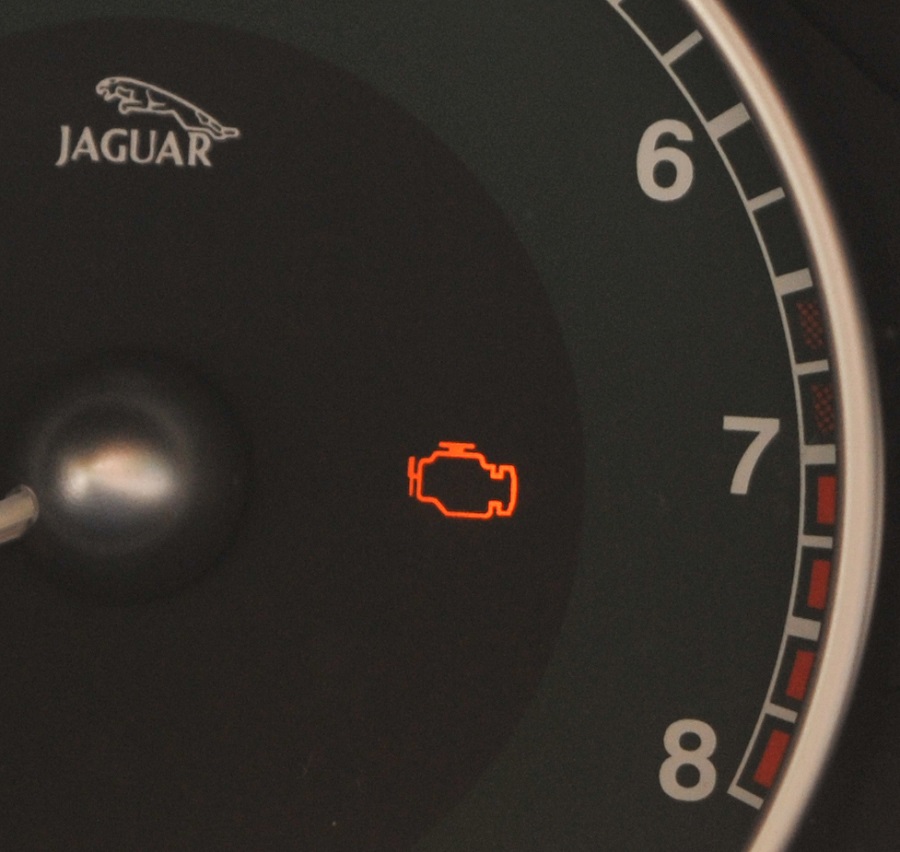
Check Engine Light
A rather vague warning, the check engine light doesn’t alert you to any specific problem, so any manner of things could be going on under the hood. However, although this warning light can be an indicator of something very serious, it can also simply be the result of something as comparatively minor as faulty emissions sensors. Whatever is causing it though, it’s not a light you want to ignore. If you’ve got a fault code reader, see if that can diagnose the issue. Otherwise, a trip to your local garage should be high on your to-do-list.
Can you drive with a check engine light?
In a lot of circumstances, it can be safe to drive the car if you have a check engine warning light. But you should always exercise caution when driving. While it may not be a serious fault, it could also be one that causes more damage the longer you drive. If you don’t have a fault code reader to hand in order to determine the issue, visit your local garage for an investigation.
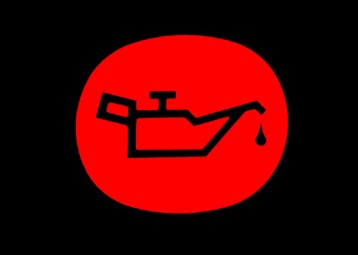
Engine Oil Pressure
Not to be confused with the engine oil level light (looks similar but has a wiggly line beneath it) which kicks in when you’re running low, this light indicates that oil simply isn’t circulating around the engine at all. If this is the case, you need to stop immediately to hopefully avoid blowing your engine up. To be honest, if either oil light comes on, you’ll be lucky to avoid any sort of internal damage.
Can I drive with an engine oil pressure light on?
Under no circumstances should you drive your vehicle if you have an engine oil pressure light illuminated. One of the biggest reasons for catastrophic engine failure is oil starvation. Driving without enough engine oil is a one way street to detonation. You won’t just be paying for an investigation, the likelihood is new engine parts or a complete engine overhaul. Be warned!
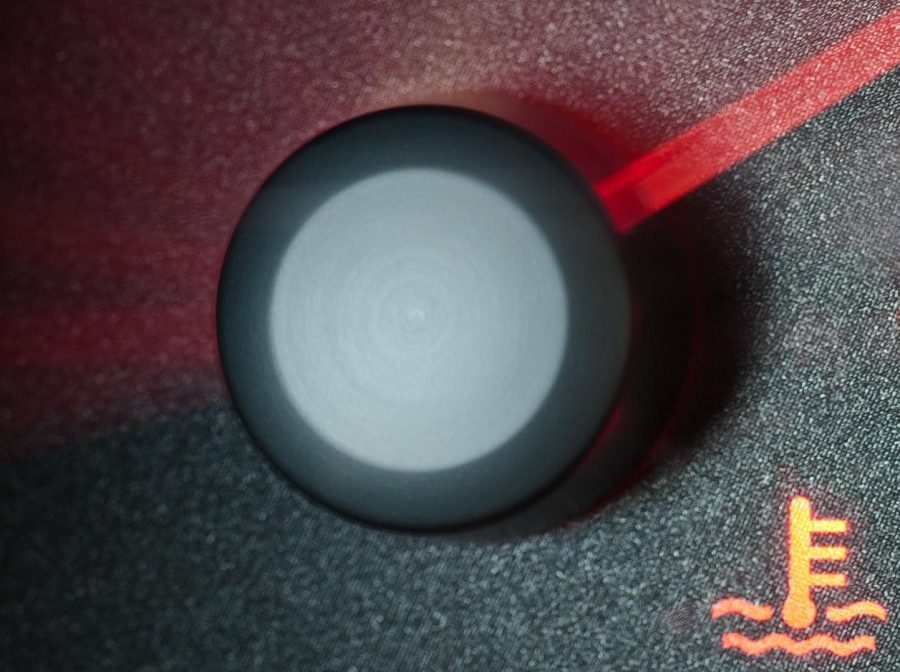
Engine Temperature
Nobody likes being too hot, and your car feels exactly the same way. This thermometer symbol indicates that the car’s engine is currently running at a temperature beyond the safe limit. The cause could be anything from a cooling failure to pure hard use on a track day, but whatever it is, you need to stop driving immediately and let the car cool down. Otherwise, you’re looking at a blown engine.
Cam I drive my car with high engine temperature warning?
Again, you shouldn’t drive your car with a high engine temperature warning. Doing so can again result in engine damage. It’s best to understand the optimum running temperatures for your engine, you can do this by reading the owners’ manual. Usually, if the temperature needle climbs above 110 degrees C, you should start to be concerned, especially if you can’t hear your fans kicking in. A way of reducing engine oil temperature effectively is to switch the heater fans to hot and the speed to its highest setting as this will help to circulate coolant through the engine. Remember though, this isn’t a fix, merely a temporary step you can use to get home or to a garage.
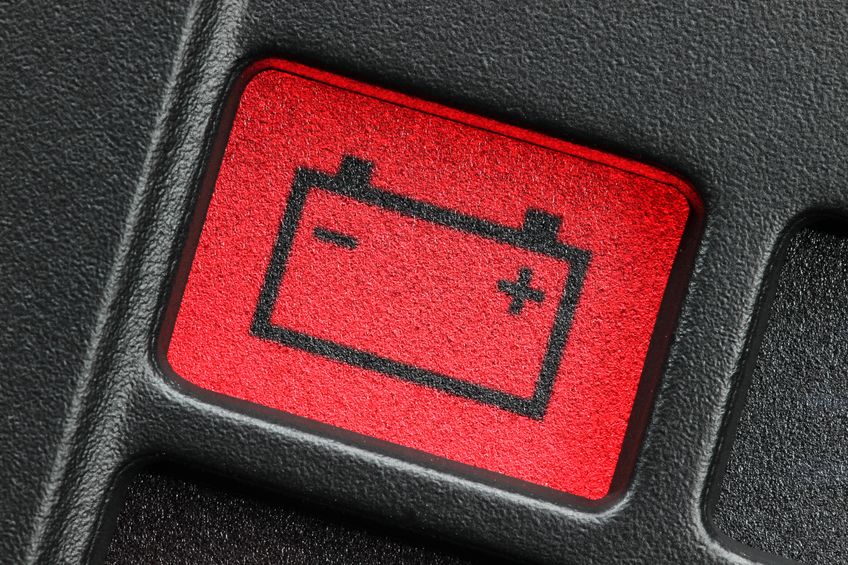
Battery Charge
People often overlook car batteries when it comes to vehicle maintenance, as they’re not a complex mechanical part or a finite fluid. However, they’re very important in their own right. After all, the battery powers pretty much everything that makes a car… a car. If you’ve got this warning light on your dash, it likely means one of two things. Either the battery itself is old, dead, or dying, and needs replacing, or you’ve got an alternator problem.
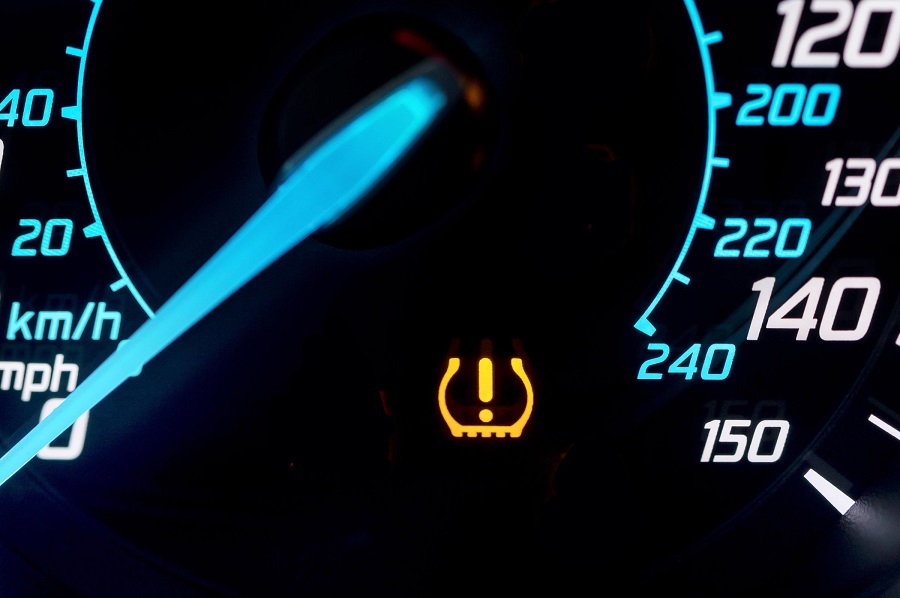
Tire Pressure
A relative newcomer to the world of car warning lights, this tire pressure indicator came into effect as a required standard in 2014. So, if your car is older than that, it probably doesn’t have this warning light. Essentially, its job is to alert you when pressure drops below an acceptable level in any of your vehicle’s tires. The fix could be as easy as simply pumping some more air into the tire, though in a worst-case scenario the light could also indicate a puncture.
Also note that tire pressure monitor systems do fail. The sensor that is in the tire isn’t excluded from damage over time, or simply becoming faulty. Always check your tires using a separate tire pressure gauge to ensure correct levels. Under inflated tires can reduce performance, economy and tire life. A simple car maintenance check can go a long way to saving you money. Especially if you replace a tire thinking you’ve got a puncture when the sensor is the element that has failed.
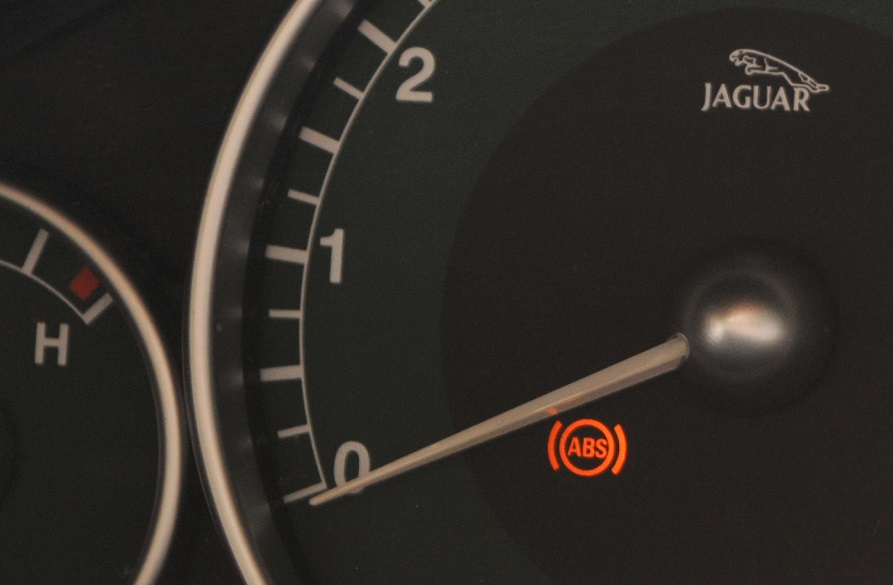
Anti-lock Brake System (ABS)
ABS is an important safety tool for modern road cars, ensuring that your brakes don’t lock up under hard braking. This helps you to retain control of your vehicle in extreme driving scenarios, so if the warning light is on, you should get that problem sorted by a mechanic as soon as possible.
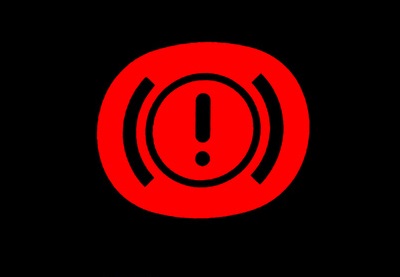
Braking System Fault/Parking Brake
If you see this symbol, it most likely means that you’ve got the parking brake (or handbrake) engaged – and you don’t want that if you’re on the move. Alternatively, if you see this symbol with a diagonal line slashed through it (and colored orange rather than red), that indicates that the parking brake is faulty. Hopefully not because you’ve been driving around with it engaged…
However, that’s not the full story. If you see that red warning light while driving and you know for sure that you have disengaged the parking brake, it could be a sign of a more serious braking system failure. In that scenario, you should pull over immediately and check your brake fluid levels as well as look for any obvious damage to the braking system hardware. From here, it’s best to consult a garage, even if it is just an annoying faulty sensor.
Speaking of annoyance, you might find it a little frustrating that one warning light serves a dual purpose. Well, some car manufacturers avoid this issue by using a separate warning light for the parking brake, which looks like the letter P enclosed within a bracketed circle.
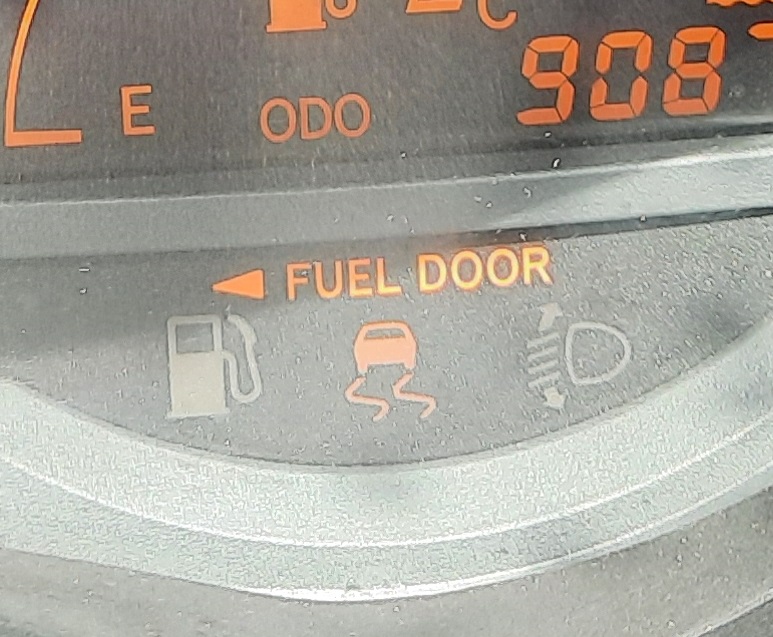
Electronic Stability Control (ESC) & Traction Control (TCS)
Electronic Stability Control, or ESC, is a clever bit of wizardry that helps a car to stay on course when its under extreme turning or braking pressure, whereas traction control helps the car not to wheelspin as much when under harsh acceleration or when there’s little road grip. ESC is generally standard, especially in modern cars. TCS used to be reserved for performance vehicles only, but nowadays it’s a common sight in regular cars too.
If this warning light flashes at any given time, that simply means that the system has been engaged. If you drive something sporty, you might have noticed it in the past if you’ve been a little overambitious in slippery winter conditions. Not speaking from experience though, of course…
The real issue with this warning light is if it stays on consistently, rather than flickers. In that instance, the light is indicating that there’s a fault with your ESC or TCS, which will require the attention of a mechanic. If you have a car which enables you to turn these driver aids off, you’ll likely see a similar light illuminated with the word ‘off’ written underneath, should you choose to strip away the safety net in the name of raw helmsmanship.
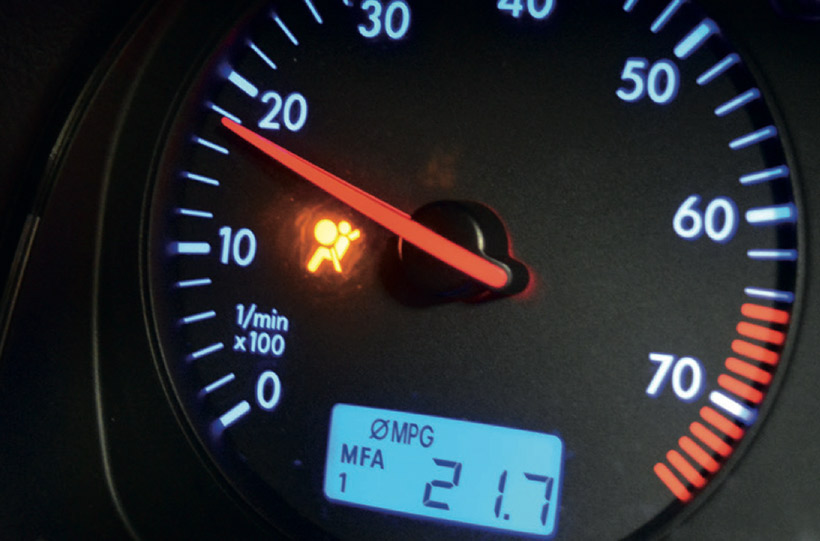
Airbag & Belt Tensioner
In modern cars, airbags and seatbelt pre-tensioners are non-negotiable safety features. If this light illuminates on your dash, it means you’ve got a problem with one or both of these key protective devices. Naturally, you’re going to want to get that looked at asap.
However, from a car modifying point of view, this warning light can be a particular point of ire for people who swap out their steering wheel for an aftermarket option. By making that modification, you’re removing the connection between the (no longer existent) airbag and its sensor, resulting in the light being lit for eternity. Luckily, we’ve got a whole guide about how to override that system and remove the warning light to save your sanity. Read it here.
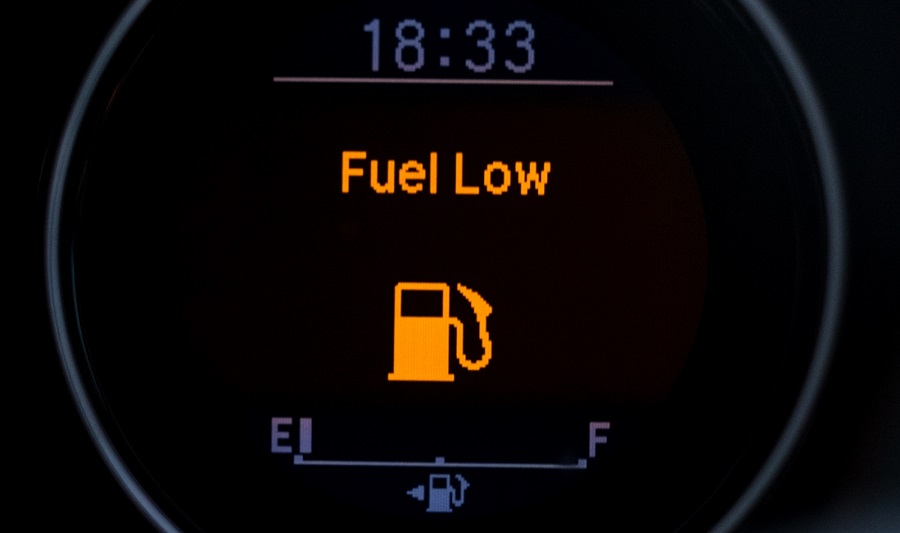
Low Fuel
Hopefully this one’s fairly self-explanatory. If you see this warning light and your fuel gauge is at zero, it’s time to fill up. Manufacturers usually code in a bit of leeway, meaning that it’s possible to drive a reasonable distance with the fuel light on before the car really does conk out, but regardless, it’s not advisable to make a habit of pushing your car to this stage.

